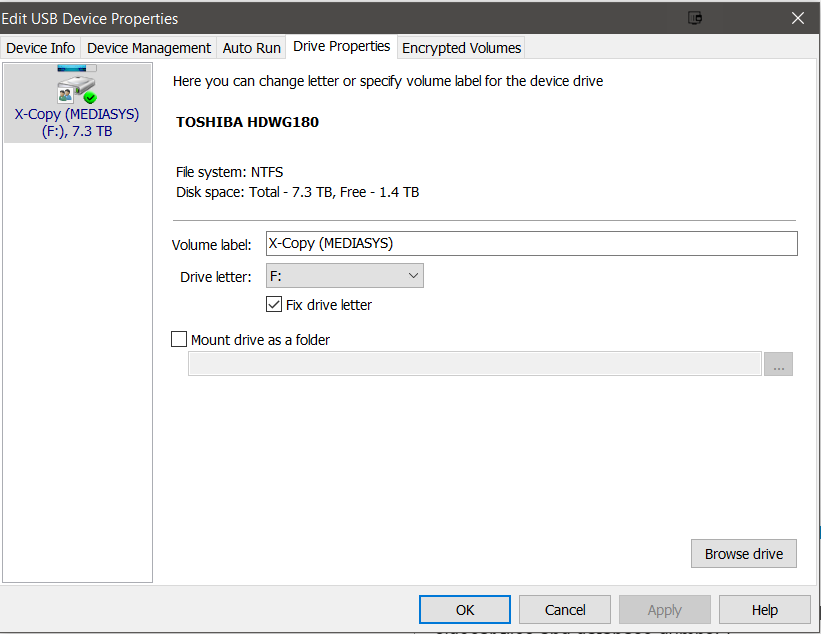@jee I have “spare” USB3 drives both MBR (old SATA SSDs with and adapter) and a 6TB drive so I can test but I believe that just using an external drive actually doesn’t work, i.e. the UUID is there to enable DxPL to recognise an old drive using the number rather than the drive letter!
The problem I investigated was about a user who alternated using a pair of drives to ensure that any disk failure did not go undetected but they were using ‘Projects’ and ran into the ‘image missing’ problem, because DxPL was re-discovering the images when a drive was connected, i.e. it looks as if things are working but DxPL is re-adding images to the database (in addition to the copy that was already there.
Hence when testing various scenarios I frequently create ‘Projects’ to provide a way of checking what I am actually looking at, the original data or another copy in the database!?
During the investigation I learned about the UUID in the ‘Folders’ Table and the only way of “cheating” DxPL is to create a single Directory to which different drives (Volumes) can be attached, i.e. a “Mount Point”.
The ‘Folders’ Table refers to the “Mount Point” which remains “intact” but can have different volumes attached!
The Plus is that my research seemed to show that it worked but the disadvantage is that it needs to be established from the start. There is now a real issue that any ‘Projects’ may refer to “missing” images on the unmounted drive but providing DxPL does not rush to clean up such entries they will re-appear when the appropriate drive is re-mounted.
Arguably DxO should provide a mechanism to “override” the UUID but …
Plus although the mount point helps with USB drives I am not sure how to use it with a combination of Hard drive (normal use) and USB3 drives (for backup), i.e. my USB3 drives are copies of the larger part of my F:\ and G:\ drives and the file structure for my photos are identical!
I could create a mount point on E:\ and see if I can attach F:\ and then replace it with an external USB3 drive! Given I have two backup machines and they have SATA switches to change OS drives I should be able to do this without risking my main machine!
But all this testing takes time and I have decided it is essentially a waste of a valuable resource, namely my time. Given the reluctance of DxO to change things that would be easy to “fix” I have decided to limit (to 0 if possible) my testing, except in this case I am laying the ground work for my own recovery plan!?
Regards
Bryan
PS:- I can confirm that the UUID has the casting vote when deciding whether DxPL has seen a directory before or not. Using two SSDs labelled TEST with an identical directory I
- Plugged one into USB and was allocated a drive of Z:, discovered in DxPL, created a project and dismounted the drive
- Plugged the other SSD to the same adapter and was allocated a drive letter J:, discovered etc.etc.
- Eventually got the original Z: with the drive letter J: and the database shows
and DxPL shows
but
with





